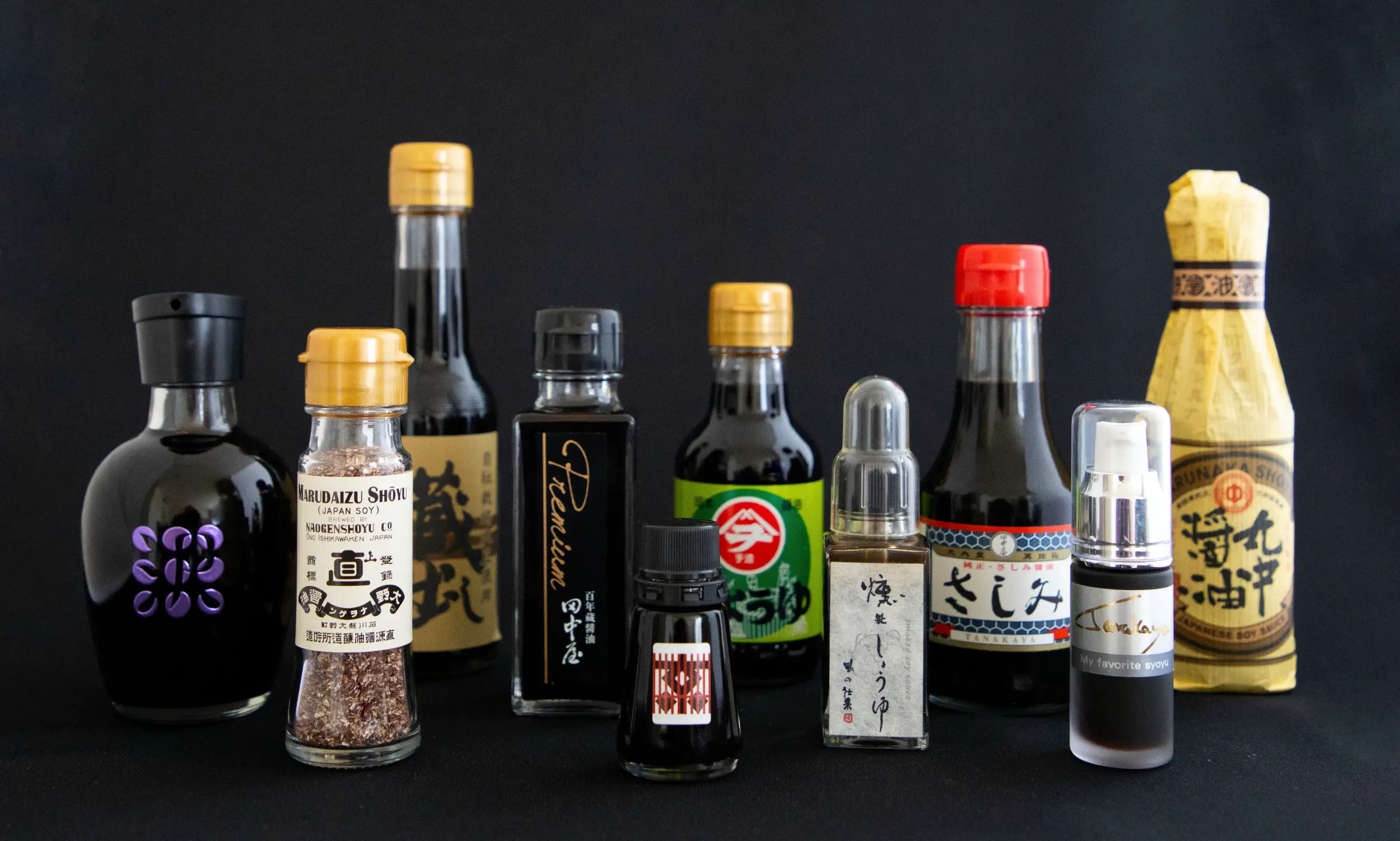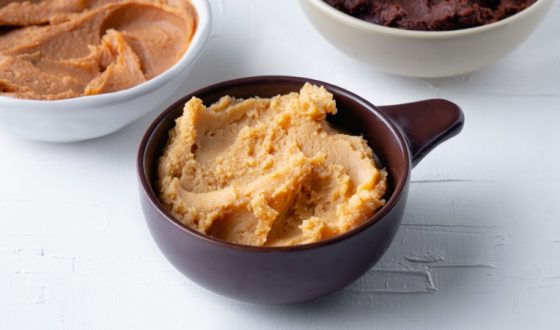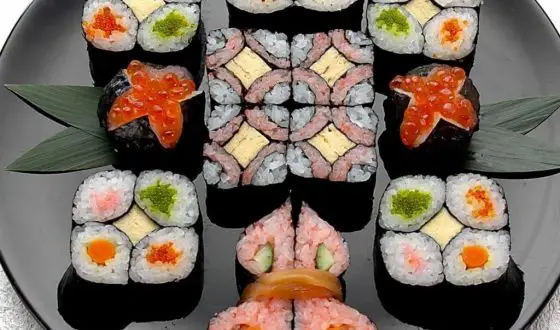What Is Shoyu? A Guide To An Indispensible Spice Of Japanese Cuisine
Have you ever imagined Japanese food without any condiments? To anyone that is a fan of seasonings, it must be a tough nut to crack. Japanese cuisine is often bland and almost spice-free, so food is inseparable from condiments. In Japan, shoyu (Japanese name of soy sauce) is among the most popular seasonings besides mirin and rice vinegar. The taste of shoyu is one of the most familiar to Japanese, but definitely the strangeness to foreign visitors, especially those from non-Asian countries. Thus, in this article, we will provide the answer to the question: “What is shoyu?”
What Is Shoyu? – Complete Introduction
Shoyu: History
In order to fully understand “what is shoyu?“, we should go back to the history to track its origin. Soy sauce, in general, originated from China approximately 2000 years ago in the name “chiang” and ”shih”. Chiang and shih were introduced into Japan before AD 700; and since the 16th century, they have been coined the name “shoyu”. The ingredients of shoyu soy sauce are simple, just soybeans and wheat. The basic procedure for the mass production of shoyu in Japan was formulated in the 17th century. Then, it has been exported to India, Southeast Asia, and even to Europe. The soy sauce products were thermally sterilized and transported in iron or ceramic containers with stoppers.

The basic procedure for the mass production of shoyu in Japan first appeared in the 17th century
Shoyu: Classification
There are five types of shoyu based on the different characteristics of color, viscosity, taste, and aroma. These are koikuchi shoyu, usukuchi shoyu, tamari shoyu, saishikomi shoyu, and shiro shoyu. The regular type for daily use in Japan is koikuchi shoyu. The different characteristics are primarily the different raw material composition of soybeans and wheat and the fermentation process.
Koikuchi Shoyu
This is the most typical type of ‘Shoyu’. This type of Shoyu was developed mainly in the Kanto area, and it is now in prodution nationwide. It makes up about 80 percent of the production of Shoyu. The raw materials are soybeans, 50% wheat, and salt. Salt content is 16-18%. Koikuchi shoyu has a strong aroma and a deep reddish-brown color because of a relatively long brine fermentation process. It tastes great as a dipping sauce, flavoring sauce, sauce to make a stew with, and as a sauce to blend with other sauces.
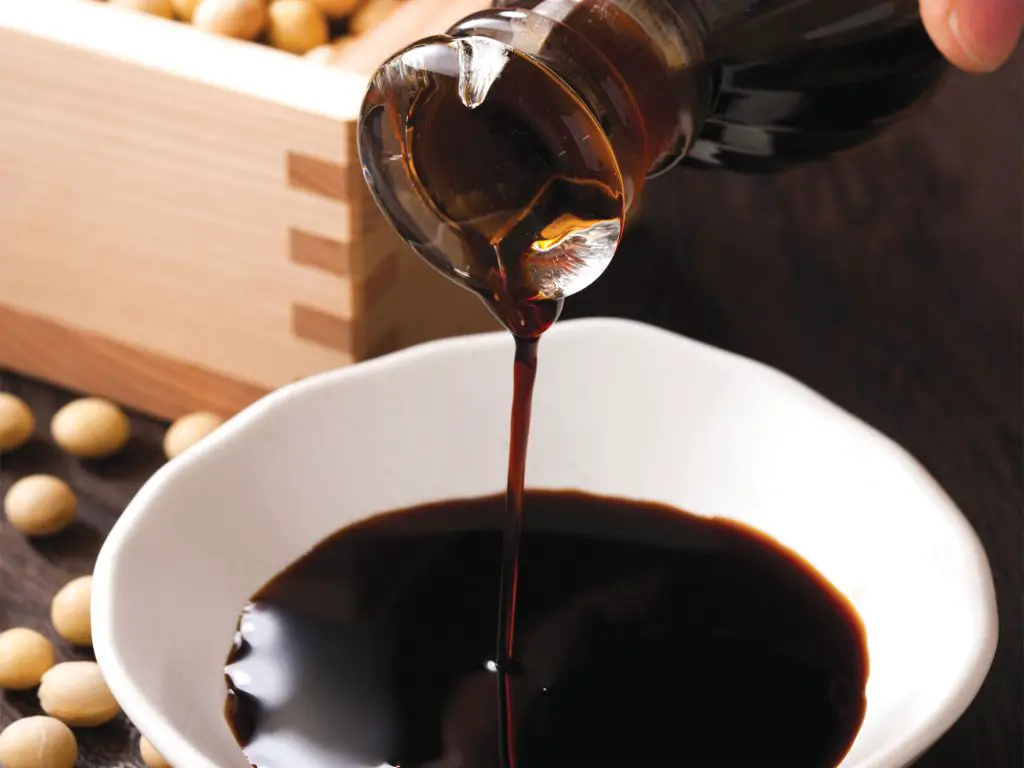
Koikuchi makes up about 80 percent of the production of Shoyu.
SEE MORE:
- Soju vs Sake: A Comprehensible Guide To 2 “National” Drinks
- Healthy Japanese Food: What You Need To Know?
Usukuchi Shoyu
Tatsuno district in Hyogo prefecture was originally home to Usukuchi, but this shoyu soy sauce is now produced nationwide. It makes up about 15 percent of the Shoyu production. The ratio of wheat and soybeans are 1:1, the same as that of Koikuchi Shoyu. Usukuchi shoyu has a lighter color and milder aroma as compared with koikuchi shoyu. These properties are achieved because of a shorter brine fermentation process which reduces the color and aroma development. In addition, it has been sweetened by an ingredient such as sweet wine. It is not as aromatic, and the salinity level is approximately 10 points higher (about 19 percent) than that of the ‘Koikuchi Shoyu’. This type of shoyu is indispensable in Kansai cuisine. It is used in a type of cooking where the natural flavors of vegetables and white flesh fish need enhancing.
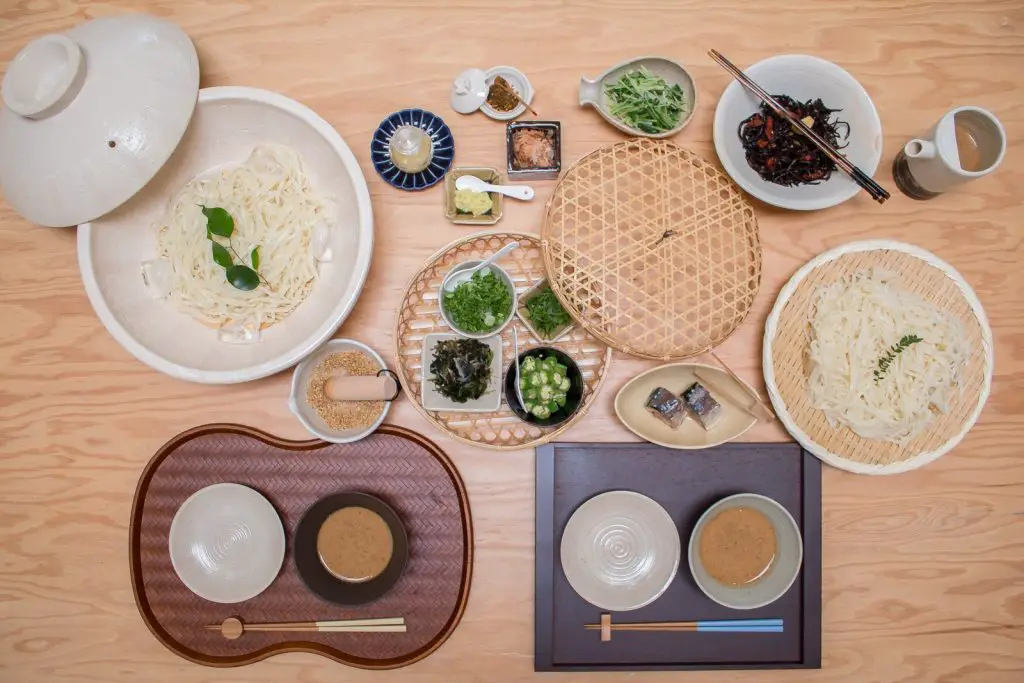
Usukuchi shoyu has a lighter color and milder aroma in comparison with koikuchi shoyu
Tamari Shoyu
Tamari Shoyu is produced mainly in Tokai district, namely Aichi, Mie, and Gifu prefectures. It makes up about 1.8 percent of the Shoyu production. Tamari shoyu uses a high proportion of soybeans with 10% or less of wheat in its production. This shoyu type has a milder aroma but has a greater viscosity and a darker color than that of koikuchi shoyu. It is used in foods such as tsukudani (food boiled down in the strong flavor of soy sauce) and rice crackers. It is also often used as a dipping sauce for sashimi (raw fish fillets), etc.
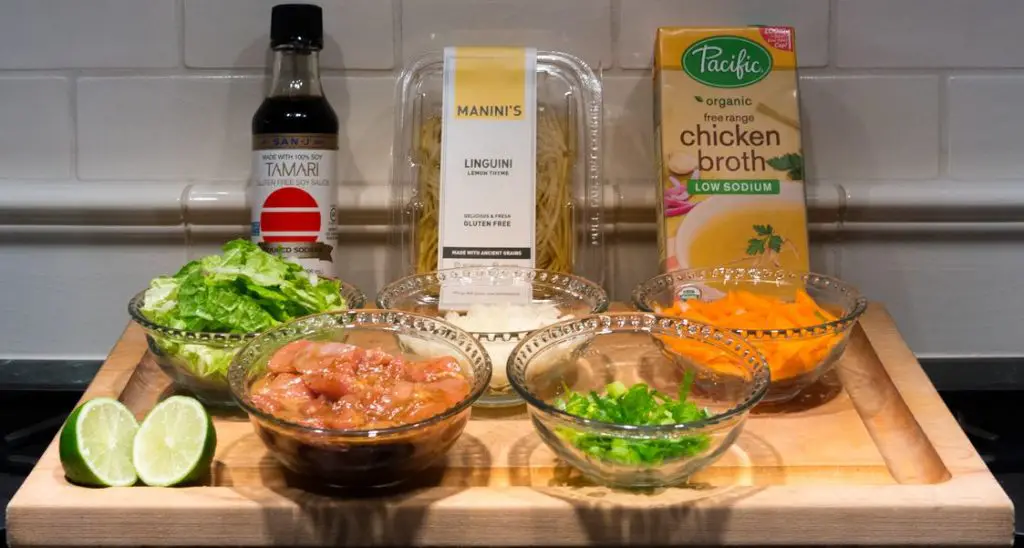
Tamari shoyu uses a high proportion of soybeans with 10% or less of wheat in its production.
Saishikomi Shoyu
This shoyu type originated in the Yanai district in the Yamaguchi prefecture, but has been predominantly produced in Kyushu to Sanin district in recent times. It makes up about 0.7 percent of the Shoyu production. Saishikomi shoyu has a specific full aroma and taste due to the use of raw soy sauce (without pasteurization) instead of the salt solution for the brine fermentation. Thanks to strong scent, thick color and rich flavor, it is also called ‘Kanro Shoyu’ (sweet soy sauce). It is used to make Kanro-ni (dishes boiled in sweet syrup) and as a dipping sauce for sashimi and sushi.
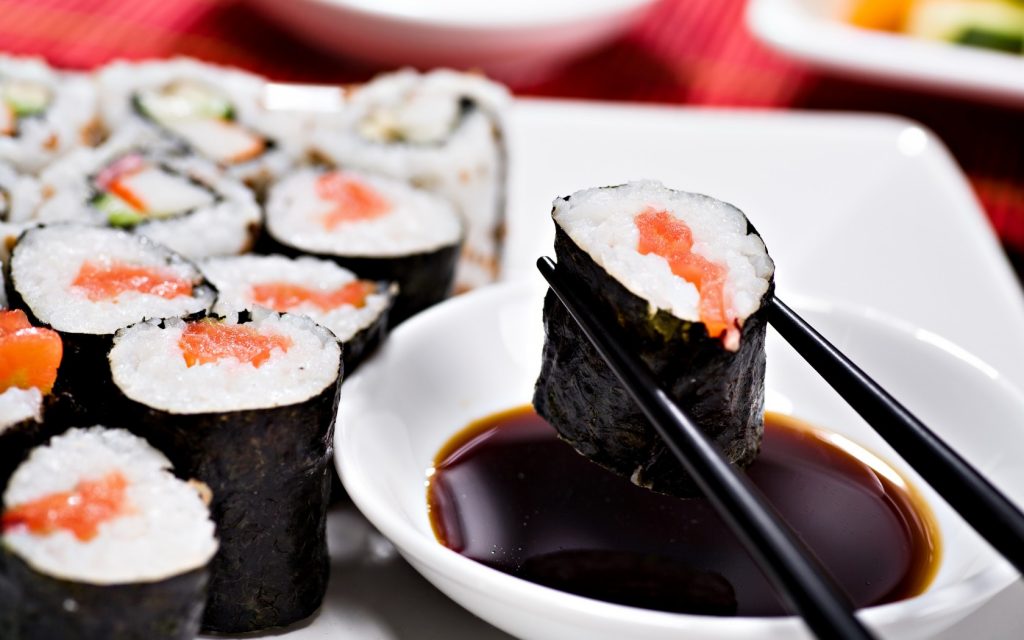
Due to strong scent, thick color and rich flavor, it is also called ‘Kanro Shoyu’ (sweet soy sauce)
Shiro Shoyu
Shiro Shoyu is produced mainly in Aichi and Chiba prefecture.It makes up approximately 0.6 percent of the Shoyu production. With the pretty short fermentation span which prevent color development, shiro shoyu is a bright yellowish or almost white. That’s the reason why this shoyu was named “shiro” ( white color in Japanese). Its plain taste and the pronounced aroma are the unique characteristics of this type of Shoyu. Another unique attribute is that it has high sugar content because the main ingredient is wheat, which is opposite to that of Tamari shoyu. Shiro shoyu is used to make soups, noodle soups, and hot pots. It is also suitable for cuisines that require enhancing the original colours and the flavours of the ingredients, i.e. vegetables and fish dishes.
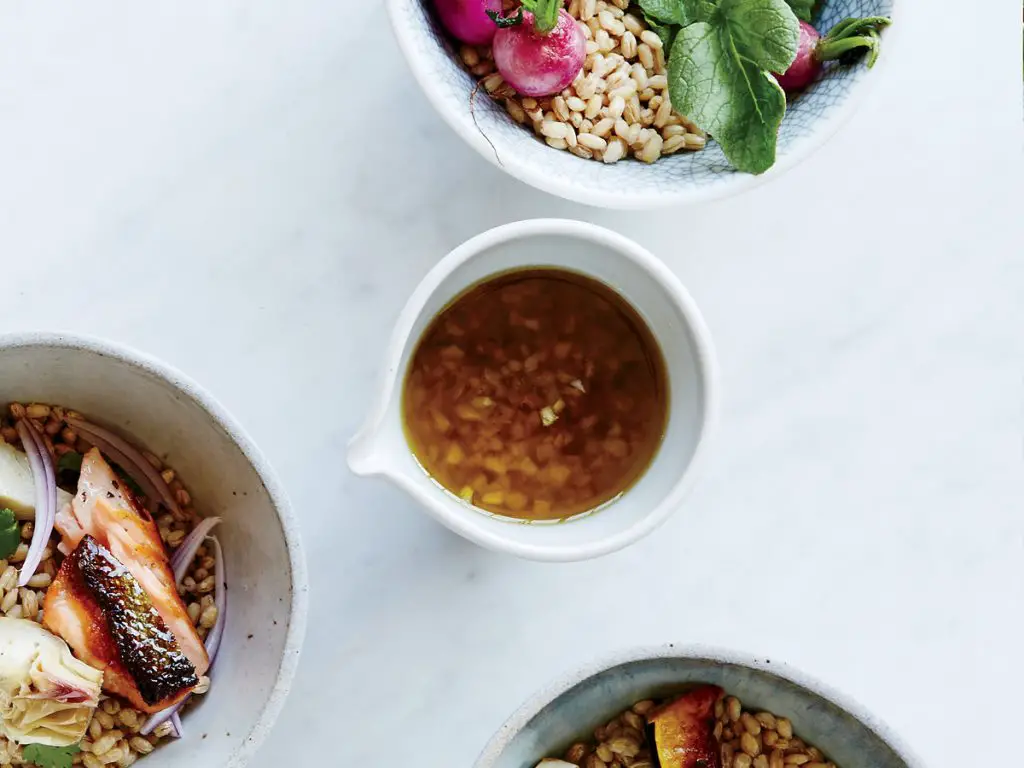
Shiro shoyu is a bright yellowish or almost white
Shoyu: Production
In general, shoyu is produced in two main steps of fermentation: the first step is to make koji, and the second step is fermentation to yield moromi. The two steps belong to solid and liquid fermentation, respectively. After the fermentation process, there is a refining process to filter or extract the last fermentation product and pasteurize it. However, the production process can be divided into 7 smaller steps below:
(1) Cooking Ingredients
Steam the soybeans. Roast and crush wheat. Then mix them up to make koji (malt). Dissolve salt in water.
(2) Making Koji
Koji mold (Aspergillus oryzae or Aspergillus sojae) is added to the mixed soybeans and wheat, and then incubated for three days to make koji. The word “koji” means soybeans and wheat with their surface covered with koji mold. It contains various enzymes that greatly contribute to the following moromi fermentation and maturation process.
(3) Making Moromi
Koji is mixed with salt water. This mixture is called “Moromi”.
Moromi is then transferred to a fermentation tank.
(4) Fermentation and Maturation
Moromi is slowly fermented and matured for a period of six months. Koji enzymes, yeast and lactic acid bacteria act in this process and create various tastes and flavors.
(5) Filtration
After fermentation and maturation, moromi is wrapped one by one with cloths and they are stacked into many layers. Then they are slowly compressed and the moromi is filtered through the cloths. In this way, raw soy sauce liquid called “Kiage” is obtained from the moromi.
(6) Heat treatment and Refining
Raw soy sauce is heat-treated for sterilization and then refined. The color, aroma and flavor of soy sauce are further enhanced during this process.
(7) Inspection and Bottling
After the inspection, soy sauce is filled into glass or plastic bottles.
Below is the chart that briefly depicts the shoyu sauce recipe:
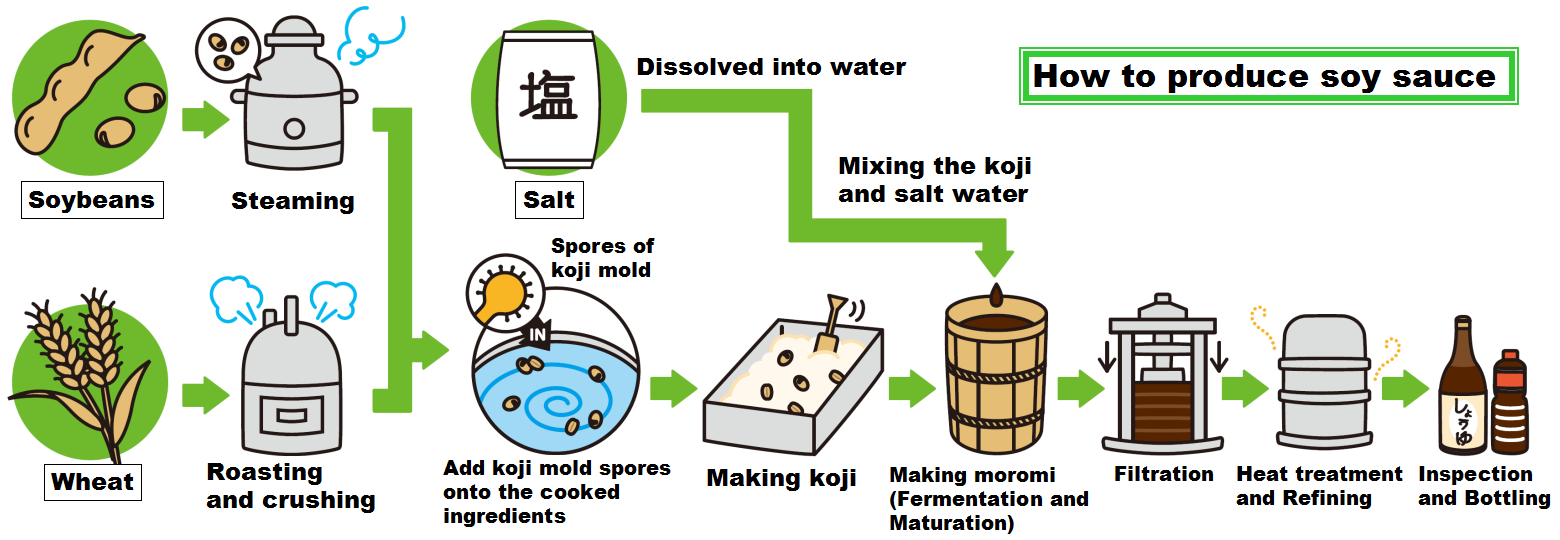
SEE MORE:
Frequently asked questions
- Does shoyu have any health benefits?
Since shoyu is a fermented soy food, it shares many of other soy food’s medicinal and nutritional properties while avoiding the problems associated with unfermented soy foods. Scientists have given particular attention to the high concentration of “brown pigment” in shoyu, because of its strong anti-oxidant and anti-cancer properties. Shoyu aids in the digestion of grains and vegetables while being rich in several minerals. Shoyu is an excellent substitute for salt in all types of cooking.
- Is shoyu harmful?
Shoyu sauce, of course, has some health concerns including its high salt content, presence of cancer-causing compounds and specific reactions to components like MSG and amines. Therefore, people should control the amount of shoyu at an average level while cooking or enjoying food.
- What are the most popular bottles of shoyu in Japan?
- Kikkoman Always Fresh Freshly Squeezed Raw Soy Sauce
- Inoue Shoyu Inoue Ancient Soy Sauce
- Oono Umakuchi Soy Sauce
- Kikkoman Always Fresh Rich Tasting Low Sodium Soy Sauce
- Fujikin Soy Sauce Usukuchi
- Daitoku Shoyu Whole Soybean Soy Sauce
- Choko Chotokusen Murasaki
- Marunaka Soy Sauce
- Marushima Soy Sauce Junsei Soy Sauce Koikuchi
Conclusion
Now you’ve found out the answers to the question “What is shoyu?”, “How many types of shoyu are there?” and “How is shoyu produced?”. If you want to know more information about shoyu soy sauce, feel free to leave a comment below and then we will discuss further.

